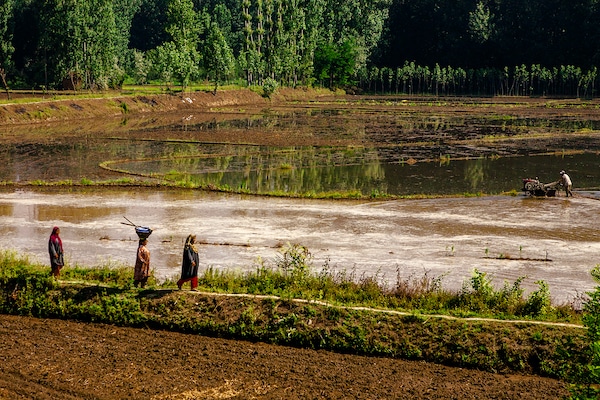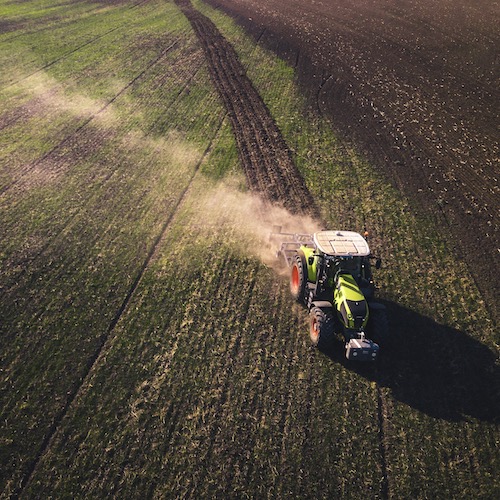Spurred by a question I have been commonly asked, yet one that I’ve long neglected as ethnographically revealing in itself, this essay takes queries about organic farming and its certification as a window to probe the relations of truth and trust.
Ethnographic moments spark curiosity and puzzlement, spur the search for new understanding, and are almost always seen to be some of the most generative parts of anthropological fieldwork. Despite best efforts to trouble distinctions between “field” and “home” it remains rare that the milieu where academic research is presented after the fieldwork is completed—workshops, seminars, and conferences—are considered to be sites that are ethnographically potent in themselves. Over the course of a number of years thinking and writing about trust, transparency and organic certification (Galvin 2018), I have come to appreciate how these milieus are equally worthy of ethnographic attention, generative for inquiry into the play of trust and doubt, transparency and unknowability, as the basmati fields of northern India where I conducted my research.
Among the questions I am most often asked when I present my work in classes or conferences, seminars or workshops, usually after a formal Q&A has ended, goes something like: “so, were these farmers really organic?” My internal reaction to this question has long been a combination of unease and dismay, for I construe the purpose of my research not to assess and evaluate farmers (as would a certification inspector) but to try to better understand how the quality of becoming, and being, organic is assembled in the first place. Over time, I came to see this question as ethnographically significant in its own right, for it too says something about how the contours and relations of truth, transparency, trust and mistrust are fashioned. To ask whether farmers are “really organic” presupposes not only that there is something that organic really is which can be discovered and adjudicated, but also conveys a certain suspicion of smallholder farmers and, by extension, of organic itself.

Organic certification participates in discourses of trust, and its commodification. While certification is often touted as necessary to produce public trust in organic quality, it often manifests as a commitment to transparency, requiring farmers, producers, and processors to make their work visible and legible through documentation, inspections, and sometimes also routine residue testing. This impetus to transparency, as well as relations of trust among those who participate in certification processes, are conditioned by one fundamental feature of organic agriculture: that organic, as a characteristic of land or its produce, does not manifest in any readily knowable, tangible or physical way (Galvin 2021).
Traceability is an important aspect of the kind of transparency sought in many supply chains.
In Uttarakhand’s Doon Valley, organic is not a quality inherent in basmati, but one that comes to be conferred on it through the land where it is cultivated, the processes of its production, as well as the methods of storing, transporting and processing it after harvest. It is thus necessary to track basmati as it is harvested, stored, transported, processed and packaged. Traceability, indeed, is an important aspect of the kind of transparency sought in many supply chains, and one that organic certification processes also seek to establish.
“Transparency, as it is used in contemporary global-speak” West and Sanders write, “presumes a surface to power that can be seen through and an interior that can, as a result, be seen.” (West and Sanders 2003: 16) Transparency, in this “global-speak”, is endowed with revelatory power, affording access to and knowledge of what otherwise remains hidden. The ability of instruments of transparency to (appear to) cut through the surface of power is clearly displayed in the logics that underlie audit cultures. In her analysis of a USDA program introduced in the wake of an E. coli outbreak which requires meatpackers to develop internal audit procedures, Dunn writes that audits “purport to have a one-to-one correspondence with what actually goes on in a firm or an organisation, thereby granting the auditors (and, by proxy, those who trust the auditors) the ability to look into the firm and see what actually happens there.” (2007, 42) Dunn, however, goes to argue that “these representations are clearly only simplified models of what actually takes place…They efface the social negotiations that take place between auditors and the people they audit before the ‘facts’ are written down.”(ibid.; see also Cavanaugh 2016).
Certification processes entailed more than simply verifying compliance; in some instances they required leaps of faith.
Similarly, organic certification processes themselves brought into relief many dilemmas and disjunctures that were unavoidable and inescapable when the ideal of organic espoused in regulatory frameworks encountered its everyday practice in the Doon Valley: certified organic seeds were not always available, small and fragmented landholdings meant that buffer zones could not be defined in purely spatial terms, records were not always routinely kept. Certification processes therefore entailed more than simply verifying compliance; in some instances they required leaps of faith. They called on inspectors to bound the limits (and limitations) of transparency, filling in gaps which inevitably emerged in a system premised on assumptions of total knowledge and oversight, patching up holes of unknowability by conjuring trust when faced with circumstances of great uncertainty. They worked, in this way, to produce cohesive narratives of organic agriculture that smoothed over the everyday challenges, complexities and negotiations that were an inevitable part of organic production, yielding organic as a quality with truth status.
The revelatory work that transparency projects such as certification claim to do arguably connects them with wider practices of truth telling and, arguably, of truth making. In this regard, such projects (including organic certification) might be considered emblematic of what Foucault described as “the will to truth.” (Foucault 1980: 66) Truth, he writes, is a “thing of this world…Each society has its regime of truth, its “general politics of truth.” (1980: 131) If oracular truths are spoken or divined (Evans-Pritchard 1937, see also Holbraad 2012), certification is conventionally seen as a medium for revealing truth through documents, inspections, and sometimes also residue testing. Regimes of truth necessarily operate in a range of ways that themselves shift over time; they are, as Foucault emphasises, inseparable from power. Along these lines, Fassin and d’Halluin (2005) describe how in a context of growing suspicion around asylum claims in France in the late twentieth century, medical certificates became increasingly necessary for determining the validity of asylum petitions. Forensic testing offers still another example of the ways in which regimes of truth work through claims to transparency; in criminal trials DNA samples are seen to work as a “truth machine.” (Lynch 2008)

Organic agriculture and its certification in Uttarakhand may appear to be a far cry from asylum interviews and criminal trials, but parallels nonetheless exist insofar as documents and, more recently, forensic sampling in the form of the routine testing of grains for prohibited residues, are regarded as indispensable “proof” of organic status. The revelatory power ascribed to these practices and technologies, and their presumed ability to show things as they really are, are deployed in emergent agrarian truth regimes founded on ever-expanding forms of monitoring, inspection, and surveillance.
When it comes to the question, “is it really organic?” we can ask instead how it is that certification produces organic (or anything else) as truth in the first place. This might lead us to see the relation of truth and trust differently (see Carey 2017).. Sentiments and relations of public trust are often assumed to be dependent on truth and verifiability: the truth revealed by the outcome of a residue test or an inspection is the foundation on which trust in the integrity of organic quality rests. But, could it also be that relations are constituted the other way around, as leaps of faith—produced in assemblages of documents, inspections, audits, surveillance, testing regimes—also become the stuff of which truths are made?
Works cited
Carey, Mathew. (2017). Mistrust : an ethnographic theory. Chicago: Hau Books.
Cavanaugh, J. R. (2016). “Documenting subjects: Performativity and audit culture in food production in northern Italy.” American Ethnologist 43(4): 691-703.
Evans-Pritchard, E. E. (1937). Witchcraft, oracles and magic among the Azande. Oxford,, The Clarendon Press.
Fassin, D. and E. d’Halluin (2005). “The truth from the body: medical certificates as ultimate evidence for asylum seekers.” American anthropologist 107(4): 597-608.
Foucault, M. (1980). Power/Knowledge: Selected Interviews and Other Writings 1972-1977. Pantheon Books, New York.
Galvin, S. S. (2018). “The farming of trust: Organic certification and the limits of transparency in Uttarakhand, India.” American Ethnologist 45(4): 495-507.
Galvin, S. S. (2021). Becoming Organic: Nature and Agriculture in the Indian Himalaya, Yale University Press.
Holbraad, M. (2012). “Truth beyond doubt: Ifá oracles in Havana.” HAU: Journal of ethnographic theory 2(1): 81-109.
Lynch, M. (2008). Truth machine: the contentious history of DNA fingerprinting. Chicago, University of Chicago Press.
West, H. G. and T. Sanders (2003). Transparency and conspiracy: ethnographies of suspicion in the new world order. Durham, Duke University Press.
Featured image by Chris Ensminger, courtesy of Unsplash.com.





